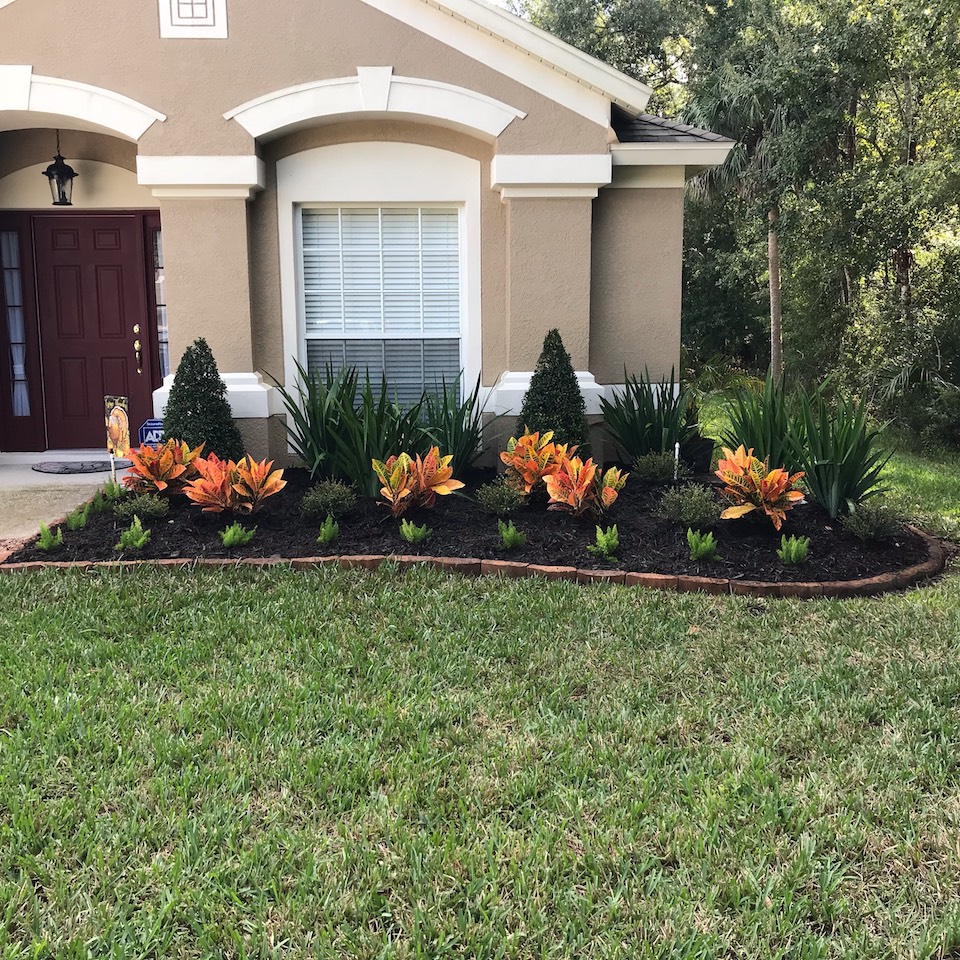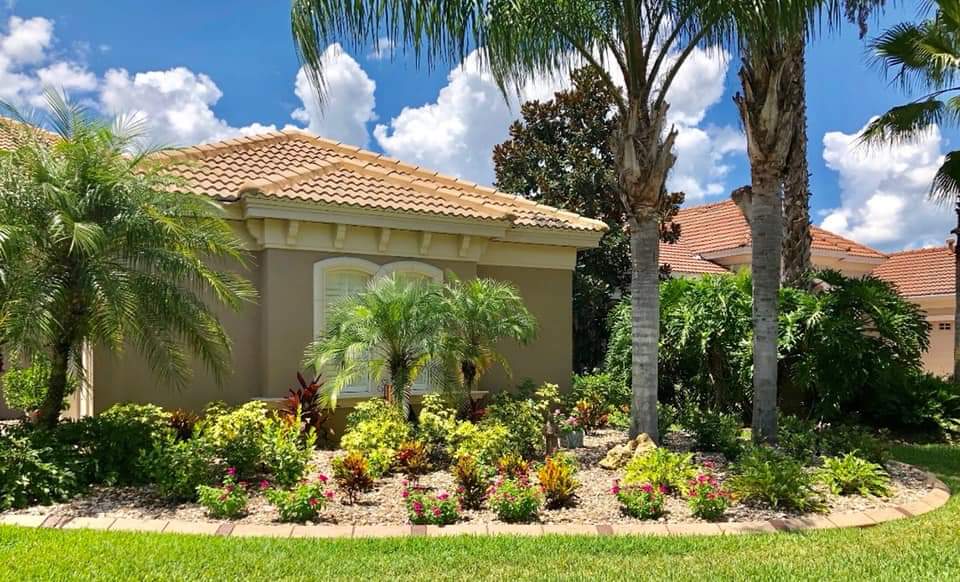Check Out Creative Solutions with Professional Palm Desert Landscaping
Check Out Creative Solutions with Professional Palm Desert Landscaping
Blog Article
A Comprehensive Guide to Creating and Implementing Effective Landscaping Solutions
The art and scientific research of landscaping prolong beyond mere appearances; they involve a thoughtful combination of layout concepts, environmental stewardship, and useful implementation. What methods can one utilize to make sure these landscapes not just thrive but additionally prosper in harmony with their environments?

Comprehending Landscape Style Principles
One might wonder what fundamental aspects contribute to reliable landscape layout. At its core, effective landscape layout depends upon a number of key concepts that assist the setup and choice of components within a room. These concepts consist of unity, rhythm, balance, and percentage, each serving to create an unified exterior setting.
Unity refers to the natural relationship among numerous parts, making sure that they interact visually and functionally. Equilibrium can be attained with symmetrical or unbalanced setups, enabling the landscape to really feel steady and inviting. Percentage involves understanding the scale of aspects in relation to each other and the surrounding setting, advertising aesthetic harmony and convenience.

Analyzing Your Outdoor Area
Prior to implementing the concepts of landscape layout, a complete evaluation of your exterior space is crucial. This initial analysis helps specify the extent of your landscape design project and guarantees that your layout aligns with the distinct characteristics of your home. Begin by analyzing the dimensions of your area, taking precise measurements to understand the available area for numerous aspects such as gardens, pathways, and outdoor patios.
Next, observe the existing attributes of your landscape, consisting of topography, dirt top quality, and drain patterns. These aspects dramatically affect plant choice and positioning. In addition, evaluate the sunshine exposure across different locations throughout the day, as this will certainly affect the kinds of plants that thrive in your garden.
Think about the microclimates created by structures, trees, and other challenges, as they can influence temperature level and moisture levels. Lastly, bear in mind of any kind of existing plants or hardscape elements that you wish to remove or maintain. This detailed assessment lays the foundation for a educated and efficient landscape design remedy, making certain that your layout is not just cosmetically pleasing yet likewise useful and sustainable for years to find.
Sustainable Landscaping Strategies
These techniques not just promote eco-friendly balance yet also improve the visual and useful value of a landscape. Applying effective irrigation systems, such as drip watering, minimizes water waste and ensures that plants receive appropriate dampness (Palm Desert Landscaping).

One more efficient method is the calculated positioning of bushes and trees to give natural windbreaks and shade, therefore lowering power prices (Palm Desert Landscaping). Rain gardens can be integrated into the landscape style to take care of stormwater overflow efficiently, filtering contaminants prior to they go into rivers
Choosing the Right Plants
Choosing the right plants for your landscape is critical to achieving both visual charm and ecological harmony. The process begins with an understanding of your regional climate, soil conditions, and the specific microenvironments within your landscape. Evaluating elements such as sunshine direct exposure, wetness degrees, and existing flora will certainly aid you pick plants that thrive in your distinct setting.
Think about incorporating native plants, as they are well-adapted to local conditions, need less upkeep, and support neighborhood wildlife. Furthermore, picking a varied array of types can enhance biodiversity while decreasing the danger of disease and pest episodes. It is crucial to evaluate the growth habits, growing periods, and seasonal colors of possible plants to develop a vibrant and natural landscape.
Furthermore, think of the intended usage of the area; as an example, if the area will experience high foot website traffic, select durable ground covers. By attentively choosing plants that align with both your environmental requirements and visual goals, you can produce a sustainable landscape that not only improves your property however also adds favorably to the bordering ecological community.

Execution and Maintenance Approaches
As soon as the ideal plants have been picked for your landscape, the focus shifts to reliable execution and recurring upkeep approaches. Successful installment starts click here to read with correct website preparation, which includes soil testing to determine nutrient degrees and pH, followed by changing the soil as required. Meticulously organize plants according to their development behaviors and light requirements, guaranteeing ample spacing to advertise healthy growth.
Watering is a vital element of application. Establish a watering schedule that takes into consideration the certain needs of each plant species, adjusting for seasonal changes. Utilizing drip irrigation systems can improve water efficiency and lower drainage.
Upkeep approaches must be implemented to make sure the durability and vitality of your landscape. Routine tasks consist of weeding, mulching, and pruning to regulate development and avoid condition. Fertilizing must be performed based upon dirt tests, supplying the needed nutrients without over-fertilizing.
Keeping track of for conditions and bugs is essential; early detection can stop substantial damage. Seasonal modifications to maintenance regimens, such as winterizing perennials and preparing for springtime development, will guarantee that your landscape continues to be healthy and balanced and aesthetically attractive year-round.
Final Thought
Finally, reliable landscaping options require a thorough understanding of design concepts, meticulous article source analysis of exterior rooms, and the application of sustainable methods. The choice of suitable plant varieties plays an essential duty in boosting aesthetic allure and ecological resilience - Palm Desert Landscaping. Successful execution and continuous maintenance better make certain the durability and vigor of landscapes. By incorporating these aspects, landscapes can be changed into stunning, useful atmospheres that advertise biodiversity and add positively to neighborhood wellness.
One might wonder what foundational aspects add to reliable landscape design. At its core, effective landscape style pivots on several crucial concepts that direct the setup and choice of components within an area.Selecting the right plants for your landscape is important to achieving both visual allure and ecological harmony. It is necessary to assess the development habits, flowering periods, and seasonal colors of possible plants to develop a dynamic and natural landscape.
Once the appropriate that site plants have been picked for your landscape, the emphasis changes to efficient execution and recurring upkeep techniques.
Report this page